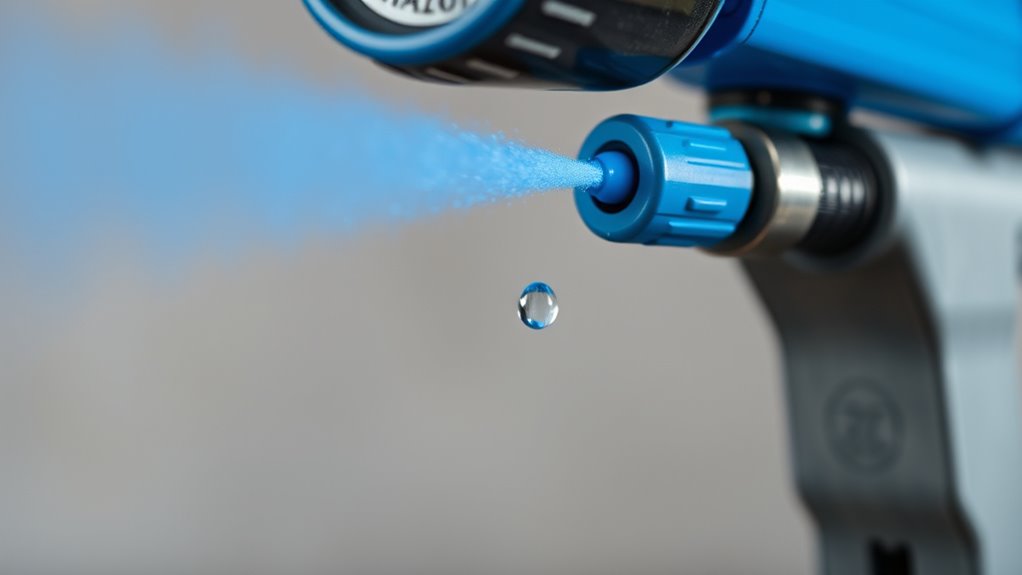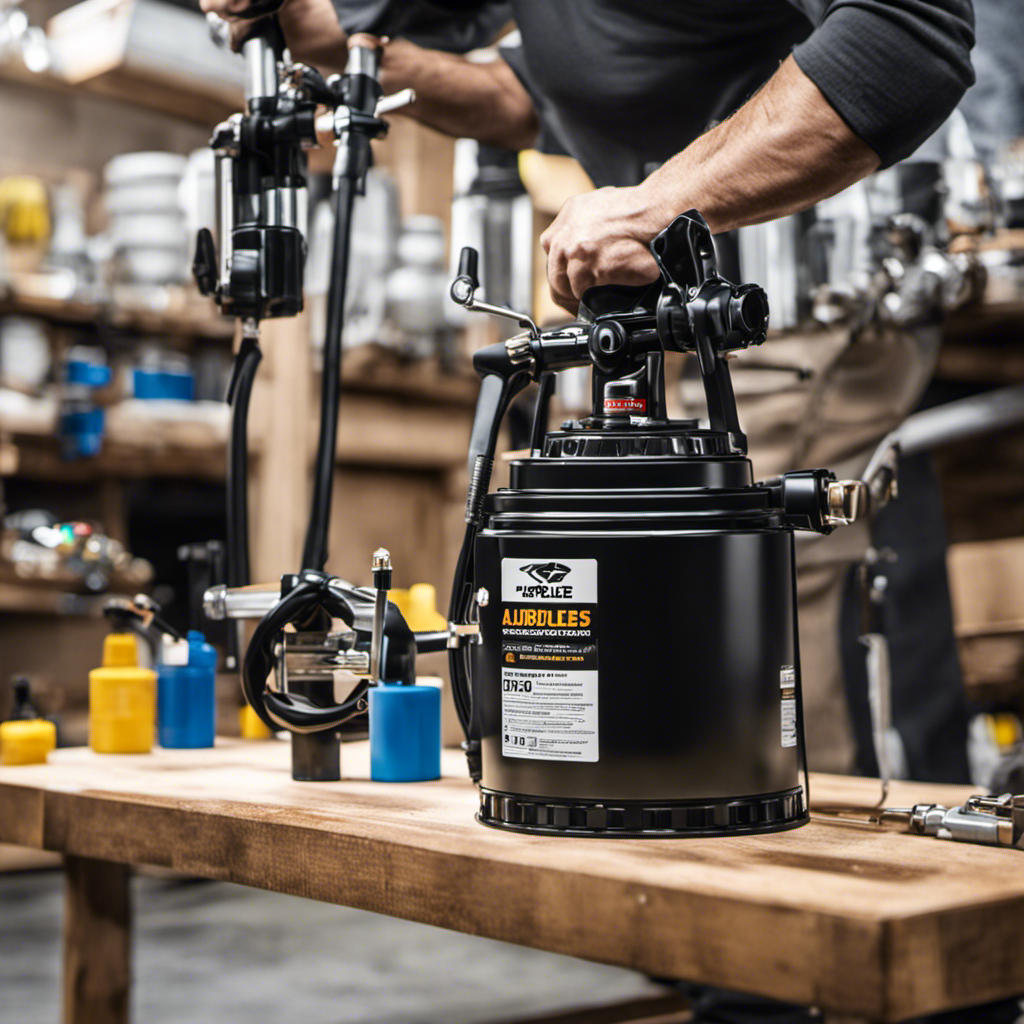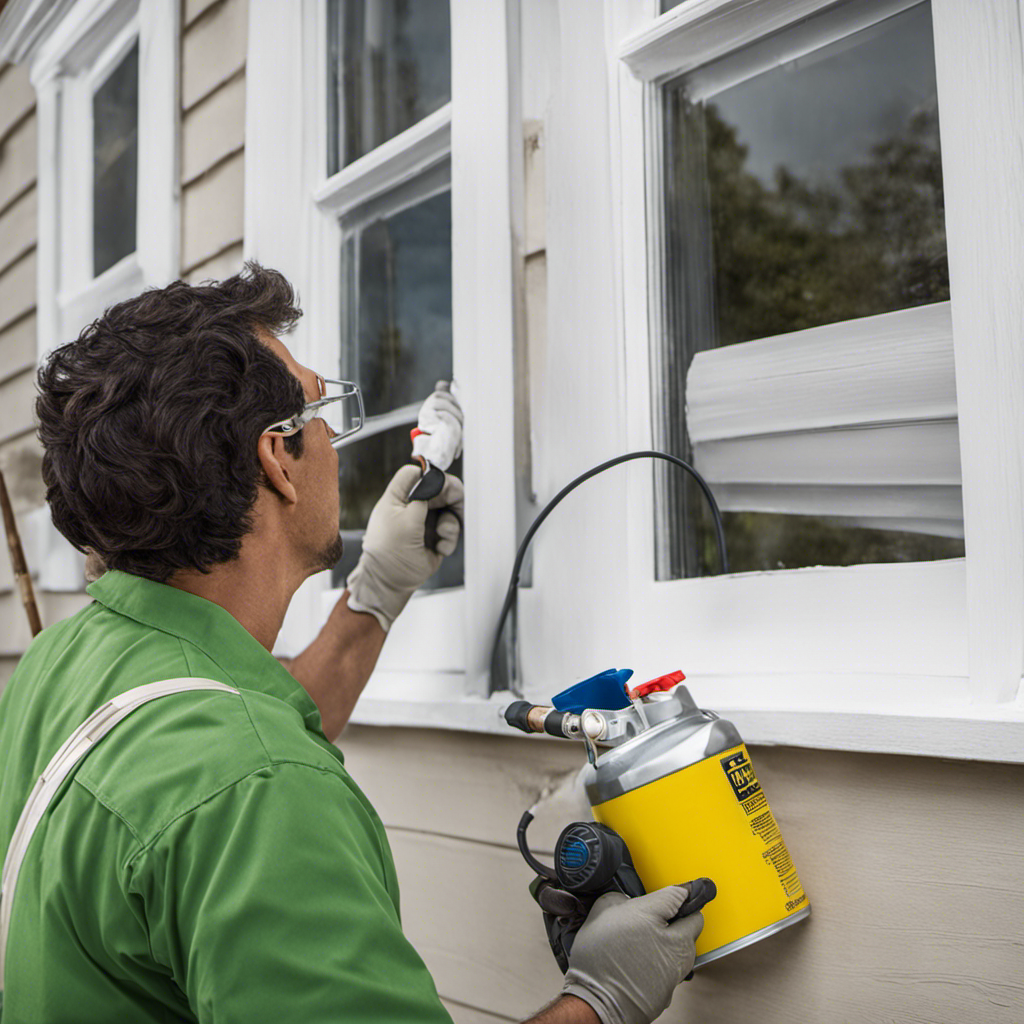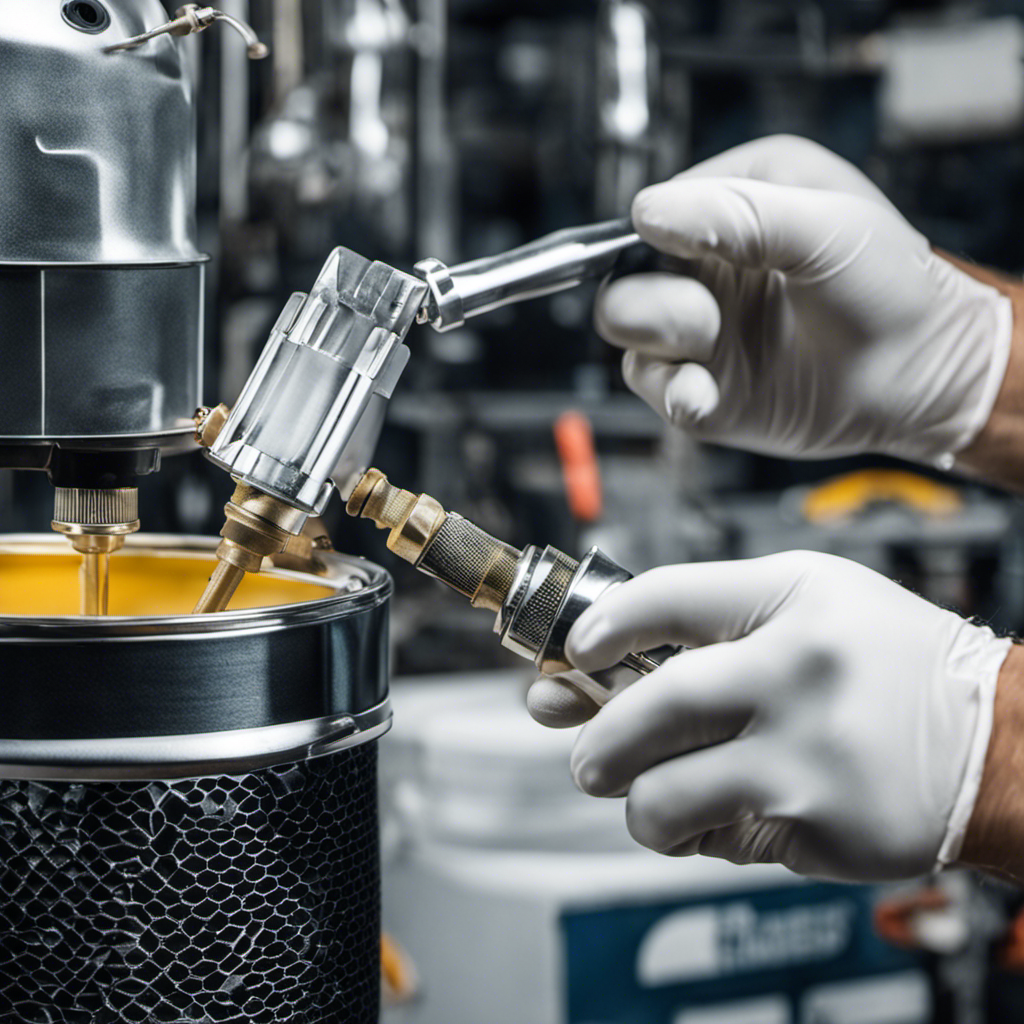If your paint sprayer stops and starts unexpectedly, it’s likely due to nozzle clogs, inconsistent paint flow, or pressure issues. Check for dried paint or debris blocking the nozzle and clean it thoroughly. confirm your paint is properly thinned and the supply is steady. Inspect hoses for kinks or leaks and make sure the system has good suction and pressure. Continuing to troubleshoot these areas will help you fix the surging problem effectively.
Key Takeaways
- Check for nozzle clogs or debris blocking paint flow and clean the nozzle regularly.
- Ensure paint is thinned properly and not too thick, which can cause blockages.
- Inspect hoses for kinks, leaks, or air pockets that disrupt consistent pressure.
- Prime the sprayer to eliminate air pockets and maintain steady paint supply.
- Maintain proper system pressure and clean filters to prevent surges and inconsistent spraying.

Intermittent spraying is an effective technique for controlling pests and conserving resources, but it can become frustrating when your paint sprayer keeps stopping and starting. If you notice your sprayer surging or sputtering, it’s often due to issues with paint flow or nozzle clogging. Understanding these problems helps you troubleshoot quickly and get back to a smooth, even spray.
When your sprayer intermittently stops, it’s usually because the paint isn’t flowing consistently. This could be caused by a clogged nozzle or a restricted paint supply. Over time, paint can dry or thicken inside the nozzle, blocking the flow and causing the sprayer to surge or sputter. You might see uneven patches or experience sudden stops during your work. To fix this, start by inspecting the nozzle for any dried paint or debris. Cleaning it thoroughly with warm water or a suitable solvent ensures unobstructed paint flow, which is essential for continuous spraying. Also, check the paint itself—if it’s too thick, thinning it according to manufacturer instructions can improve flow and prevent clogging.
Nozzle clogging is a common culprit behind irregular spray patterns. It occurs when dried paint or debris accumulates inside the nozzle or on the screen, impeding the flow of paint. Regular maintenance is key—stop periodically to clean the nozzle and filter, especially if you’re spraying for extended periods. Using a brush or a pin to clear out hardened paint helps maintain a steady stream. Additionally, switching to a nozzle with a larger orifice can reduce the risk of clogging, especially when working with thicker paints or textured coatings. Proper cleaning and choosing the right nozzle size are simple steps that can greatly reduce surges caused by nozzle clogging.
Another factor that causes intermittent spraying is inconsistent paint supply from your container. Make sure the paint level is sufficient, and check that the suction tube isn’t clogged or pinched. Sometimes, air can enter the system, creating air pockets that disrupt flow. Priming the sprayer properly before starting can help eliminate air and guarantee a steady paint supply. Also, inspect the hoses for any kinks or leaks that might restrict the flow. Maintaining a steady pressure and ensuring the equipment is clean will help prevent surges and keep your spraying smooth and even. Additionally, understanding suction power and maintaining proper system pressure are essential for consistent paint flow and avoiding surges.
Frequently Asked Questions
Can Changing the Nozzle Improve Intermittent Spraying Issues?
Changing the nozzle can definitely help with intermittent spraying issues. Over time, nozzle wear and spray blockages can cause uneven spray patterns, leading to stops and starts. By replacing a worn or clogged nozzle, you guarantee a consistent flow, reducing surging and improving overall performance. Regular maintenance and using clean, compatible nozzles can keep your sprayer operating smoothly, avoiding those frustrating interruptions.
What Regular Maintenance Prevents Paint Sprayer Surging?
Think of your paint sprayer as a well-oiled machine—regular maintenance keeps it humming smoothly. To prevent surging, you should clean the nozzle regularly to avoid clogs that can disrupt paint flow. Additionally, check and replace worn seals, filters, and hoses as needed. Properly thinning your paint and keeping the equipment clean guarantees consistent paint flow, preventing those frustrating starts and stops, and keeping your project looking flawless.
Are Certain Paint Types More Prone to Causing Spray Interruptions?
Certain paint types are more prone to causing spray interruptions because their paint consistency and viscosity control vary. Thicker paints or those with inconsistent viscosity can clog the nozzle or cause surging, leading to stoppages. To prevent this, always check the paint’s viscosity and verify it’s properly mixed. Using the right thinning agents and maintaining consistent paint consistency helps your sprayer operate smoothly without interruptions.
How Do Environmental Factors Affect Spray Consistency?
Environmental factors are like the weather’s mood swings, affecting your spray consistency. High humidity effects can cause paint to thicken or clog the nozzle, leading to uneven spray. Temperature fluctuations make the paint expand or contract, resulting in inconsistent flow. To keep your spray steady, work in stable conditions, avoid extreme heat or cold, and consider using paints formulated for different humidity levels. This way, your finish stays smooth and professional.
Is There an Ideal Pressure Setting for Continuous Operation?
For continuous operation, there’s no one-size-fits-all pressure setting, but proper pressure regulation is key to achieving spray stability. You should adjust your sprayer to match the material and surface you’re painting, typically between 1500 to 3000 PSI. Monitor the spray pattern and adjust gradually, ensuring consistent pressure. This helps prevent surging or uneven application, keeping your spray steady and efficient throughout your project.
Conclusion
Now that you know the common causes behind your paint sprayer’s wild surges, you’re practically a DIY hero! Fixing intermittent spraying might seem tricky, but with these tips, you’ll tame that beast in no time. Remember, a little maintenance goes a long way—otherwise, your sprayer might act like a rebellious toddler throwing a tantrum. Keep your equipment clean and your pressure steady, and you’ll be painting smooth as glass, turning your home project into a masterpiece!
Franz came aboard the Paint Sprayer Zone team with a background in both journalism and home renovation. His articulate writing style, combined with a passion for DIY projects, makes him an invaluable asset. Franz has a knack for breaking down technical jargon into easy-to-understand content, ensuring that even the most novice of readers can grasp the complexities of paint sprayers.










